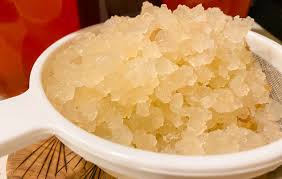How to Multiply Mixed Numbers: 6 Steps

Mixed numbers consist of a whole number and a fraction. When dealing with mixed numbers, learning how to multiply them can be a valuable skill in various mathematical applications. In this article, we’ll walk you through the process of multiplying mixed numbers in 6 easy steps.
Step 1: Convert Mixed Numbers into Improper Fractions
The first step in multiplying mixed numbers is converting them into improper fractions. An improper fraction is a fraction whose numerator (the top number) is greater than or equal to its denominator (the bottom number).
To convert a mixed number into an improper fraction:
1. Multiply the whole number by the denominator of the fraction.
2. Add the result to the numerator of the fraction.
3. Place the sum over the original denominator.
For example, if you have the mixed number 2 ⅓, convert it to an improper fraction by:
1. Multiplying 2 (the whole number) by 3 (the denominator): 2 x 3 = 6
2. Adding the result (6) to the numerator (1): 6 + 1 = 7
3. Placing this sum (7) over the original denominator (3): 7/3
Step 2: Check for Simplification Opportunities
Before multiplying your improper fractions, check if you can simplify either one by finding their greatest common divisor (GCD). This step will make calculations easier and give you a simplified product.
Step 3: Cross Cancel
Cross cancelling means reducing both fractions by common factors before multiplying them together. This will simplify your work and make multiplication faster. Check for any common factors in both numerators and denominators, then divide them out.
Step 4: Multiply Numerators and Denominators
Multiply the numerators together and place their product over the product of the denominators. This will give you the product of the two fractions.
For example, if you have the fractions 7/3 and 5/6:
1. Multiply the numerators: 7 x 5 = 35
2. Multiply the denominators: 3 x 6 = 18
3. Create the resulting fraction: 35/18
Step 5: Convert the Product into a Mixed Number
If your product is an improper fraction, convert it back into a mixed number by dividing the numerator by the denominator. The quotient will be the whole number, and any remainder will form the numerator of the new fraction.
Using our previous example:
1. Divide the numerator (35) by the denominator (18): 35 ÷ 18 = 1 remainder 17
2. The quotient (1) is your whole number.
3. Write the remainder (17) over the original denominator (18): 17/18
4. Combine as a mixed number: 1 17/18
Step 6: Simplify If Necessary
Once you have your mixed number result, check if you can simplify it further. If possible, reduce it to its simplest form.
By following these six steps, you’ll be able to multiply mixed numbers with ease and confidence. Practice this process regularly to become proficient at handling mixed numbers in mathematical calculations.






